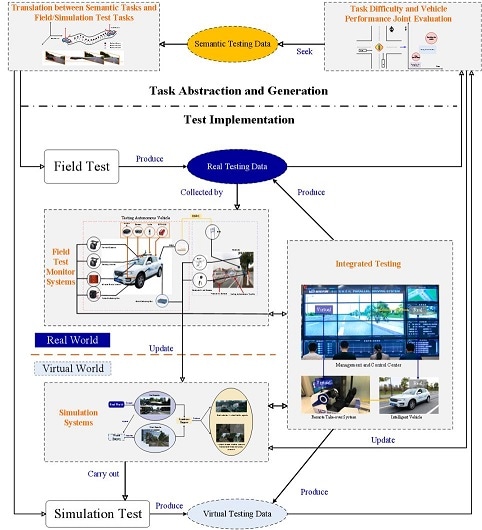May 15 2019
One of the most difficult tasks in Artificial Intelligence (AI) research is achieving autonomous driving.
 System overview flowchart. (Image credit: CASIA)
System overview flowchart. (Image credit: CASIA)
The ultimate solution lies in developing a novel Turing test system, which is capable of testing and validating the capability of the autonomous vehicle in deducing intricate traffic scenarios and making a driving decision, and thereby trigger the advancement of autonomous driving technology.
A major research problem in AI is how to test the system intelligence. Predicated on Turing, reliable and safe dependable AI systems can be realized if and only if the tests have efficient techniques and distinct definitions of tasks to produce abundant amounts of data for tests.
Scientists from the Institute of Automation of the Chinese Academy of Sciences (CASIA), Xi'an Jiaotong University, and Tsinghua University have recently developed a novel self-driven, closed-loop parallel testing system, which concentrates on implementing more difficult tests to speed up the development and testing of self-driving vehicles.
The researchers developed a smart closed-loop parallel testing system equipped with a recognition mechanism to achieve self-upgrading under the guidance of human experts.
The novel system is made up of three parts. The first part ascertains a set of semantic definitions to define the tasks that should be completed by self-driving vehicles. The second part implements the tests for given task situations. The simulation test and field test are closely incorporated within a parallel testing system, which continues to collect the latest field data so as to update the simulation system. The third part assesses both the performances of vehicles and the difficulties of tasks to search for new and the most difficult tasks.
Particularly, a confrontational learning model was created to automatically produce new task situations that can be more difficult than prevalent task instances on the basis of previous testing results, with an aim to push the autonomous vehicles to enhance its potential in adapting to a challenging environment. It is said that the system can efficiently expedite the development of autonomous driving technology.
The National Natural Science Foundation of China supported the study, which has been published in Science Robotics.